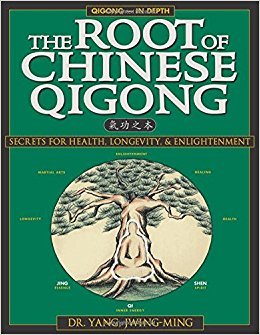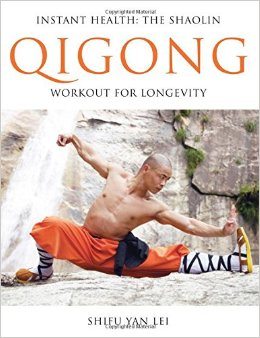For more than 4,000 years, people have used the practice of qigong (pronounced “chee-gong”) for health, longevity, disease prevention and as a meditation aid. The literal meaning of the term translates from the original Chinese as “cultivation of life energy.” A fully integrated regimen that includes meditation, regulated breathing, special postures and movements, qigong is currently experiencing a worldwide boom and is often practiced alongside other meditative and martial arts.
Having originated in China during ancient times, the practice quickly spread to other parts of Asia and eventually to other continents. Nowadays, practitioners use it as a form of natural preventive medicine, a style of martial arts training, or as a type of preventive or curative healthcare.
Techniques for Pure Practice
There are numerous ways to begin a self study of qigong, and beginners should keep in mind that medical science has much to say on the issue. For instance, recent research has shown the ancient physical practice might be effective for pain relief, treatment of hypertension, and many other maladies. Though no wide-scale scientific studies have yet been done on qigong, millions of people all over the world strongly believe that it brings them relief for a variety of ailments.
How to begin: Before locating a class and a teacher (see below), most people want to learn the basics of qigong on their own. This is a common feeling and there is nothing wrong with it. But, those new to the discipline should remember that only so much can be gathered from a film or book. There are three very basic techniques that are helpful for those embarking on their journey toward qigong mastery.
First, learn to regulate the breath. This can be done as a simple exercise where a person merely inhales for a count of six, holds for three counts, exhale for six, and then wait for two counts before beginning again. A few times through this cycle will teach the body and lungs what it feels like to voluntarily control the breath. There is no need to do it for more than a few minutes. The goal is to give the body a taste of qigong breath control. Later on, an instructor can expand on this technique and show a student all sorts of variations.
The second and third techniques bring the mind and entire body into the equation. Settling the mind through calm sitting for a few minutes is a good way to begin. Simply find a comfortable chair or cushion, sit up straight, and let the thoughts slow down. At first, the brain will “rebel” and keep up its regular pace of incessant thinking. This is natural. But after about five minutes, most people will notice that the entire thought process becomes less frenetic.
Finally, after practicing breath and mind techniques, it is time to work directly with the whole body. While sitting, close the eyes let each section of the body relax, from head to toe. If it helps to think or speak the words, “Now, relax. Relaxing completely,” that’s fine. Go from head to toe, calming each body segment. Repeat the process two or three times for maximum relaxation.
Learning how to deal with the breath, the mind and the whole body are three of the primary techniques for most styles of qigong. Anyone can get ready for a teacher by doing these essential exercises as an introduction to the ancient art.
Working with an instructor: After learning the basics of qigong from a book or video, it is highly recommended to find a teacher, whether in a class setting or one-on-one. Most large cities have courses and instructors who know how to work with beginners. There is a lot to learn, and new practitioners need to be open to how a teacher imparts knowledge.
Each teacher-student relationship is different because qigong is a very personal discipline, more like learning to paint or sculpt than mastering geometry or basic mathematics. Let the teacher lead the way and be ready to adapt to new ideas and methods.
Learn the Secrets of Qigong: Books by Experts
Qi Gong for Beginners: Eight Easy Movements for Vibrant Health
This simple guide for beginners, written by Stanley Wilson, PhD, offers a series of easy-to-do exercises that are appropriate for anyone who wants to learn more about the art of qigong. The routine Wilson teaches is ideal preparation for those who plan to take a live class or one-on-one lessons with an instructor.
The Root of Chinese Qigong: Secrets of Health, Longevity, & Enlightenment
A brilliant overview of the practice, complete with an in-depth explanation of terms used in classes and other books. Many beginners rank this as their favorite of all books on the subject.
The Way of Energy: Mastering the Chinese Art of Internal Strength with Chi Kung Exercise
The routine taught in this book gets to the essential meaning of qigong. The two “standing exercises” are explained in detail and are said to be quite powerful for those who try them.
Instant Health: The Shaolin Qigong Workout For Longevity
This book delves into the Shaolin form of qigong and details a full workout along with an explanation of how the practice can enhance longevity and overall health.
The Way of Qigong: The Art and Science of Chinese Energy Healing
This is a helpful reference book as well as an instructional guide. It offers all kinds of data, science, history and lore about qigong. It’s a real treasure trove of information for those new to the practice.
Learning qigong can be a life-changing experience. It can bring better health, a more positive attitude, and a thirst for a deeper understanding of the body and mind. While books and videos are quite helpful, any serious devotee of the art will eventually want to connect with an instructor in order to gain a fuller understanding of qigong.





